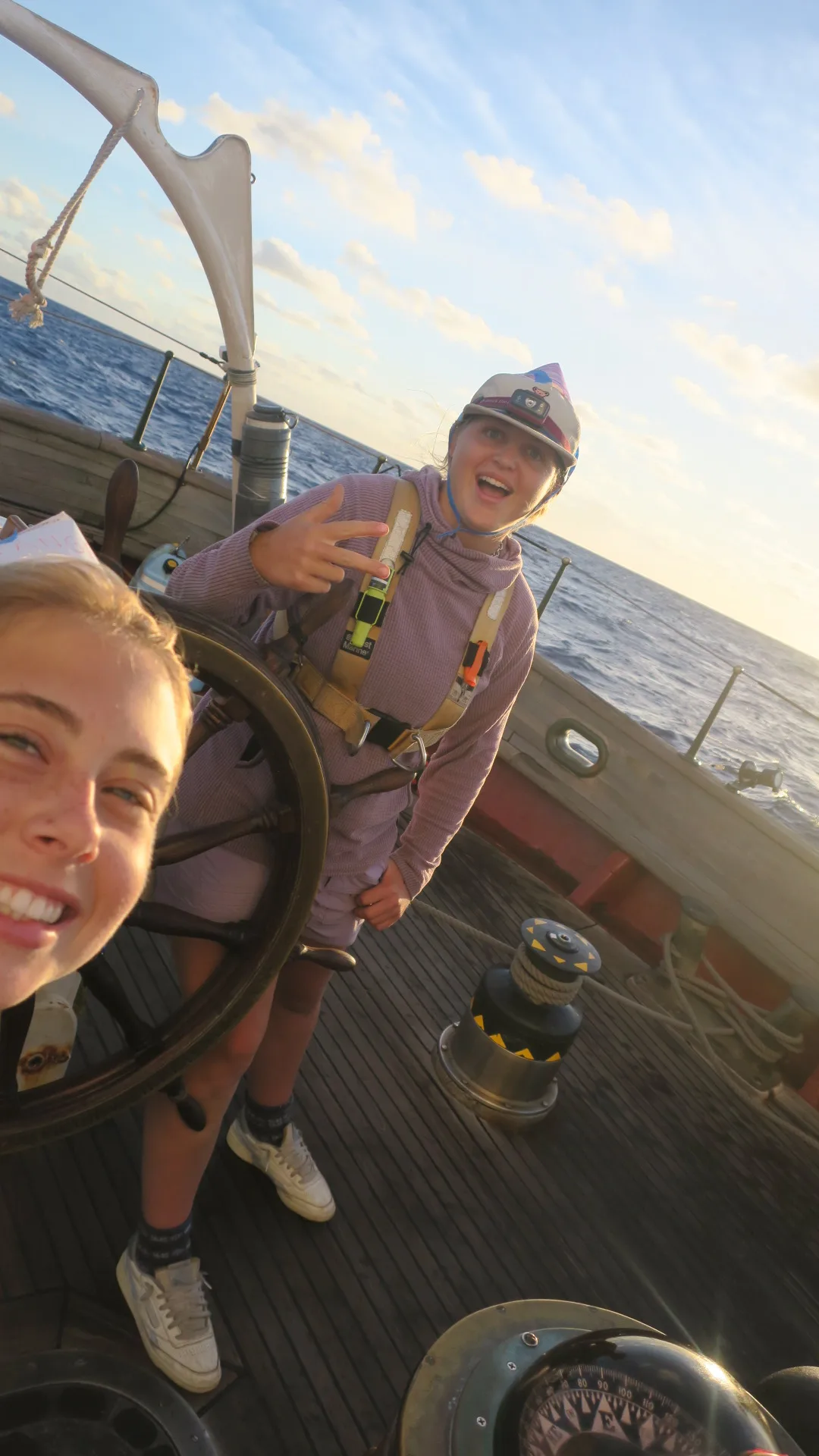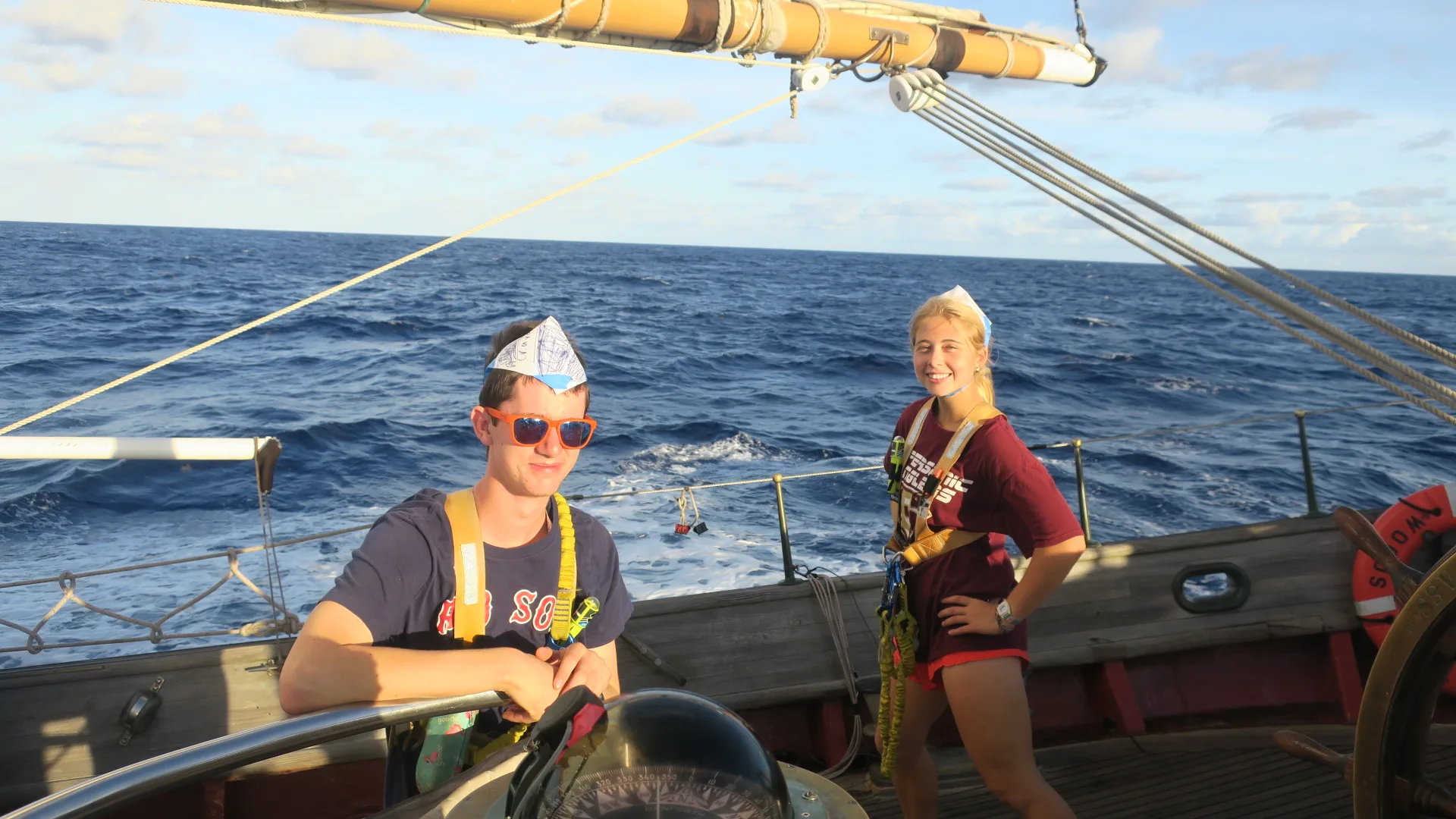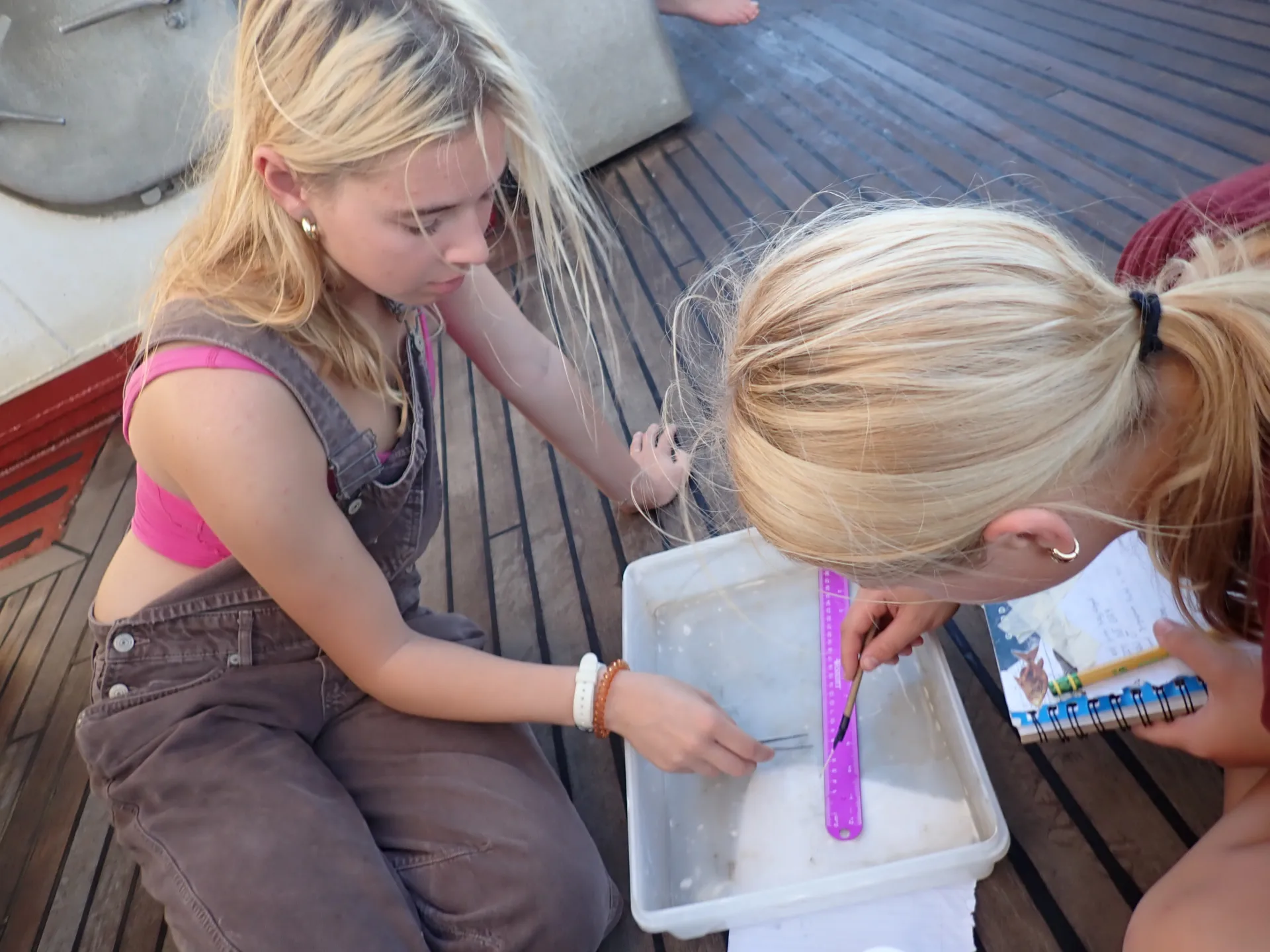Programs Blog
Retrospective Blog: Mary’s Crayon Day

Wednesday, October 29, 2025
Noon Position: 23°38.4’ N x 057°40.1’ W
Ship Heading: 240°
Ship Speed: 7 kts
Log: 2298nm
Weather: SE Wind Force 3, sailing under Deep Reef Mains’l, mainstays’l, forestays’l, and jib
Description of location: 430 nm Northeast of BVIs (En route to St. John)
My day started a little earlier than normal as my watch (B Watch) had dawn watch which begins at 01:00 and ends at 07:00, going from a sky full of stars to a gorgeous sun rise. Although its abnormal, dawn watch is my favorite. I crept out of my bunk careful not to make noise in the silent vessel, but I was forced to rush as it took two people and ten minutes to wake me up, leaving me with little to no time to get ready for the shift. I dressed in an all orange outfit to match the plans my fellow shipmates made previously that night to all dress as crayons for a little pre-Halloween celebration. We even crafted our very own hats that looked like the tip of a crayon equipped with chin straps to keep them put as we worked. It added energy and laughter to the morning.
I was on deck getting the opportunity to go through the normal cycle of Helm, Boatcheck, Dish, and Lookout. During this shift I was also the shadow watch officer, the second stage in our journey for three hours. This means I was taken out of the normal rotation to learn how to lead a watch. The night was nice, clear, and very hot. Lookout was spectacular gazing up at millions of stars. On this watch, Karen taught us a lot about celestial navigation, even showing us the Lebron-stellation (Perseus, really, but we all think it looks like Lebron James going for a power dunk). As the sun rose, celestial twilight hit, Eliza and I grabbed out sextants and began shooting the stars Sirius and Canopus. A sextant is a tool used to find the position of the ship using the stars. It’s quite cool. Our points came out to be around 30 NM off which is not too bad for two people just learning! Each time we have used the sextant, our points get more and more accurate. My personal best is being 12 NM off.
We completed the watch turnover, heading to breaky. After dawn watch the whole day was free until night watch (19:00-01:00), followed with galley cleanup that is not as fun. During the day I worked on my eel larvae project with my partner, Colin. We spent the afternoon measuring leptocephali (eel larvae) from four samples we collected in Neuston net tows along our cruise track. We ran into a slight road block as we measured 30 eels that were shrunk because of the ethanol used to preserve the samples before figuring out that we could return the eels back to their normal size by holding them in DI water (De-ionized), leading us to restart. We spent the next few hours, with help from Eliza, tediously grabbing eel larvae stretching them out and measuring them, each one incredibly fragile. As we finished we gathered up on the Elephant Table to watch the sunset. I don’t think I can ever get used to the stunning sunsets/sunrises that happen practically each day here. For dinner the Mahi Mahi fish Kai caught the day earlier was served. I have never tried fish before, but seeing the full thing get caught, chopped, and cooked, led me to be a little curious to the taste. I told Kai, who also had never eaten fish, if he did It, I would too. So it led to both of us at the same time taking one bite. I can’t say I hated it, but I didn’t love it. Night watch soon rolled around, this time I was in lab. We spent the night processing a Neuston Net tow filled with tons of zooplankton, that we then did a 100ct with. The 100 counts are challenging trying to use a microscope on a moving vessel, seeing all the little creatures makes it worth it. I was happy after such a jam-packed day to climb into my bunk to sleep. Each day here feels so long in the moment but looking back on it, it really goes by like a flash of light. We only have a few more days until we anchor in St. John, and I’m looking forward to trying to soak up as much as possible.
Mary K., B Watch


Recent Posts from the Ships
- Ocean Classroom 2024-A collaborative high school program with Proctor Academy
- Collaborations and Long-term Commitments: SEA’s Caribbean Reef Program Sets a Course for Coastal Programs that Compliment Shipboard Experiences.
- Sea Education Association students prepare for life underway using state of the art nautical simulation from Wartsila Corporation.
- SEA Writer 2022, Magazines From the Summer SEA Quest Students
- Technology@SEA: Upgrades Allow Insight into Ocean Depths
Programs
- Gap Year
- Ocean Exploration
- High School
- Science at SEA
- SEA Expedition
- SEAScape
- Pre-College
- Proctor Ocean Classroom
- Protecting the Phoenix Islands
- SPICE
- Stanford@SEA
- Undergraduate
- Climate and Society
- Climate Change and Coastal Resilience
- Coral Reef Conservation
- Marine Biodiversity and Conservation
- MBL
- Ocean Exploration: Plastics
- Ocean Policy: Marine Protected Areas
- Oceans and Climate
- Pacific Reef Expedition
- The Global Ocean: Hawai'i
- The Global Ocean: New Zealand